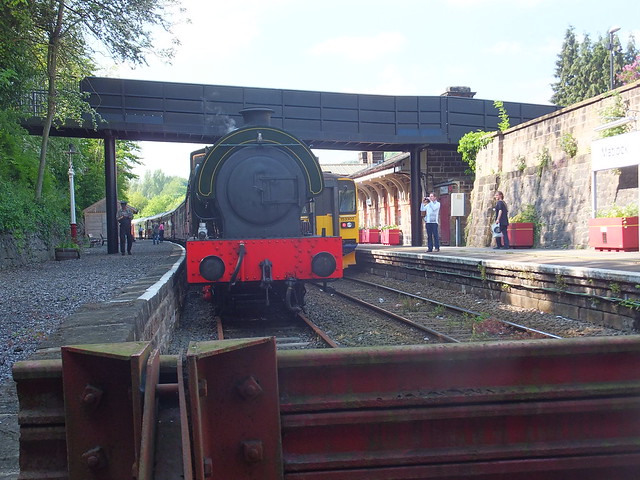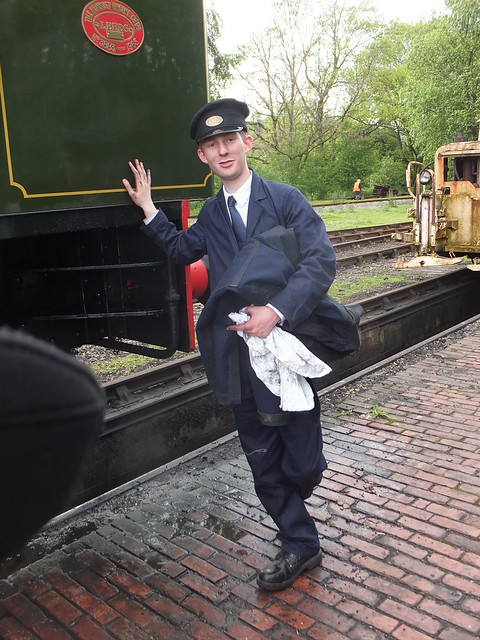In 2008 I made my first visit to Myanmar (formerly Burma) and travelled on Yangon's suburban railway. The railway trip is described in the post The Circle Line, Yangon.
In a later post, Yangon Area Railways, I described the colour light signalling on the railways around Yangon. I'd discovered that in January 1946, following severe damage to the railways around Yangon during World War II, an order was placed with Westinghouse Brake and Signal Company for two Style 'L' miniature lever frames for Burma Railways. They were intended for 'Rangoon' and 'Kemmendine'. At that time, I hadn't found the signal box at Yangon (as Rangoon is now called) and I was puzzled about Kyee Myin Daing (as Kemmendine is now called) because I'd seen two mechanical signal boxes there, still apparently in use.
In February 2013, shortly after writing the Yangon Area Railways post, I made another visit to Yangon. This time, I located Yangon Central Power Signal Box and, although confined to public areas, confirmed that the Style 'L' miniature lever frame was still in use. I wrote about this discovery in a post here.
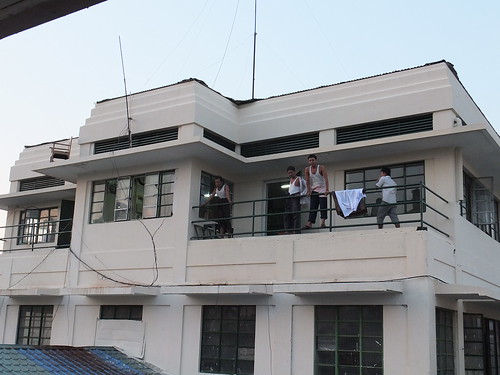 Yangon Central Power Signal Box in 2013.
Yangon Central Power Signal Box in 2013.
On my next trip to Burma, my friend Doctor Hla Tun made arrangements on 25th April 2014 for me to visit Yangon Central Signal Box and make a cab ride around the Circle Line. The day is briefly described in the post Exploring Yangon's railways.
The Style L Power Frame
Early miniature-lever Power Frames retained mechanical interlocking between the levers, in a similar fashion to purely mechanical lever frames. But as installations became more complex, the problems of providing mechanical interlocking in the limited space available increased. The Style L Frame introduced by Westinghouse Brake and Signal in 1929 interlocked the miniature levers electrically. This meant that a large frame could be installed in two or more sections, if that was operationally more convenient. For instance, the frame at Waterloo was divided into three sections and that at Crewe North Junction into two sections. In addition, all the interlocking was on the operating floor of the signal box. In front of each lever an engraved description or lead plate was provided. Behind each lever, on an almost vertical panel, are the repeater lamps.
Movement of a lever has two actions:-
1) Through a link piece, the lever moves a horizontal lock slide extending to the rear of the frame. Suspended below the lock slide is a sealed Interlocking Magnet which allows or prevents lever movement. A second, smaller Indication Magnet is also provided.
2) Through bevel gearing, movement of the lever rotates a vertical shaft through 120 degrees. Each shaft can mount up to 36 phosphor-bronze electrical contact bands. Where additional contacts are required, a further bevel gear is provided at the rear of the lock slide, rotating a second vertical shaft at the rear of the frame, allowing a further 36 contacts to be fitted.
For more detailed information, refer to Mr. Francis' excellent book [reference 1].
My visit to Yangon Central Power Signal Box
I was made very welcome by two signalmen, a senior signalman, a regulator and a train announcer. Most had some English. Just as well, because the frame, the illuminated diagram and all the lever description plates were in English. That made it a lot easier for me to work out what was going on. I've noticed before when overseas that because most railways work in similar ways, it's possible to work out quite a lot even if you can't ask questions of the local staff, so I quickly felt at home.
The lever frame dominated the signal box - 143 minature levers in one straight line with an illuminated track diagram behind.
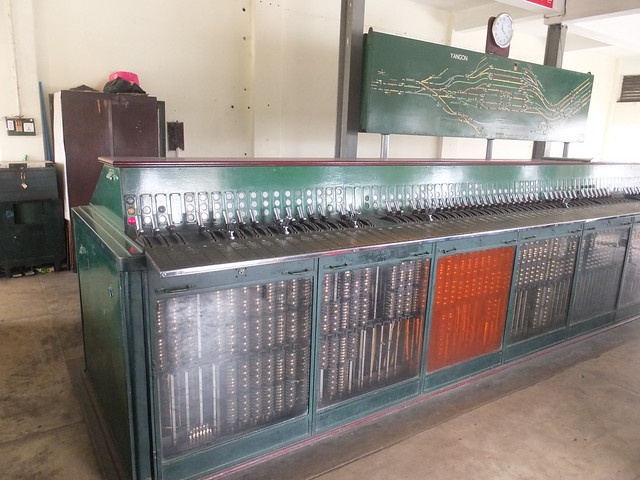 General view of the Style L Power Frame and Illuminated Track Diagram at Yangon.
General view of the Style L Power Frame and Illuminated Track Diagram at Yangon.
There were some signs that the frame might be getting 'tired' - occasionally a signalman would 'jiggle' a lever, perhaps because of a sticky lock. The lever description plates appeared to be engraved brass, filled white. All the repeater lamps were, as normal, fitted on the nearly-vertical panel behind the levers. Points displayed the usual 'N' (normal) or 'R' (reverse).
 Detail of left end of the frame.
Detail of left end of the frame.
The front access panels were plastic glazed, so all the electrical contacts on the front vertical shafts were visible.
 Vertical contact shafts at the front of the frame.
Vertical contact shafts at the front of the frame.
Looking from the rear of the frame, there were similar access panels plastic glazed across the top allowing the lock slides and the associated mechanics to be seen. The interlocking magnets themselves were below the top plate but the positions they occupied were visible. Finally, there were vertical rear access panels, plastic glazed (similar to those at the front), allowing inspection of the electrical contacts on the rear vertical shafts.
Conventionally, the relay room was below the operating floor but I was only able to see it through the vision panel on the padlocked door.
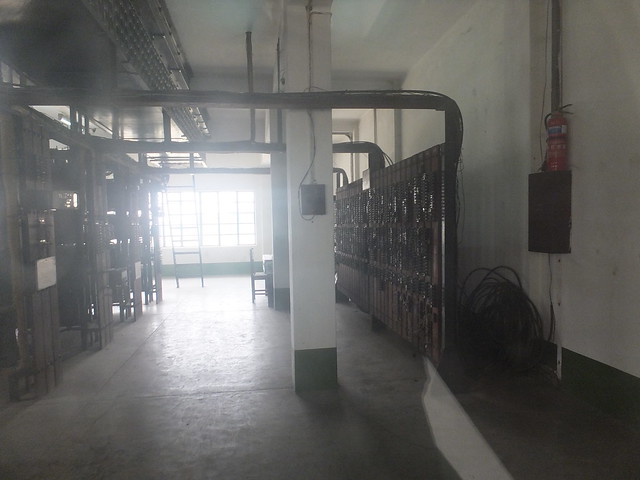 View of the relay room. Racking with large shelf-type relays on the left and cable termination panel on the right.
View of the relay room. Racking with large shelf-type relays on the left and cable termination panel on the right.
Operations at Yangon Central Station
It's always interesting to watch operations around Yangon Central station but, of course, the Power Signal Box gives the best view. There are two balconies at the front of the signal box and the signalmen make frequent use of them to check exactly where trains are.
Subsequent changes
Since the visit in 2014 described in this post, the signalling around Yangon has been modernised. The new arrangements are described in the post Railway Operation Control Center, Yangon.
Books
[reference 1] 'The Style L Power Frame' written and published by J. D. Francis 1989 (ISBN 0 9514636 0 8).
My Pictures
Yangon Central Power Signal Box.
You can find all my albums of pictures showing Burma Railways here.
More
Myanma Railways (Index)
You can select all my posts about railways in Burma (in reverse date-of-posting order) here.
There's a post about Crewe North Junction Signal Box here with a little more information about (and more photgraphs of) the Style L Power Frame.
[Minor update & link to 2020 post added 31-Mar-2020]

